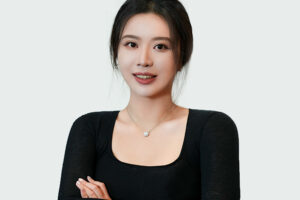
IDA 2023 Graphic Design of the Year
Can you briefly tell us about your background and what inspired you to pursue design?
I‘m Yiwen Zhang, and I currently reside in New York. My professional journey in the creative industry has been diverse and enriching, encompassing roles in prestigious fashion publications and leading communication, marketing, and PR agencies. My expertise ranges from graphic design and UI design to roles of greater responsibility, such as Art Director and brand strategist. Over the past five years, I have collaborated closely with global brands across various sectors. My focus has been on digital media, advertising, and brand marketing, where I have strived to aid these brands in achieving commercial success.
My initial foray into the creative field was through graphic design, a discipline that honed my artistic sensibilities and innovative outlook. The driving force behind my career choice, however, is the thrill of witnessing how creative solutions can address market challenges and profoundly impact society and individual lives. This intersection of creativity and societal influence is what motivated me to pursue a career as a creative professional.
What drove you to submit your work to the IDA competition, and your thoughts on how winning this competition impacted your artistic journey?
IDA offers a unique platform for architects, interior designers, product designers, graphic designers, and fashion designers. It’s a space where creative minds can showcase their exceptional work to global audiences. It’s undeniable that through the recognition, many of the industry’s leading designers and groups have demonstrated their remarkable influence and creativity. I’m deeply honored to have received the Graphic Design of the Year from IDA. This accolade is not only an acknowledgment of my efforts but also a catalyst for my continued professional growth. Through the IDA platform, I’ll be able to share my design philosophy with a broader audience and collaborate with creative talents worldwide to push the boundaries of design, bringing more innovation and excellence to the design community.
Could you describe any challenges you faced while working on your winning project?
Addressing the pressing issue of mental health in contemporary society, the Rhythmic Structure of Typography serves as a sanctuary, melding trauma memories with the essence of punk culture. This novel and inclusive approach paves the way for the burgeoning field of creative therapies in the contemporary landscape. It empowers the public to articulate their innermost thoughts, emotions, and experiences raw and directly, fostering a renewed sense of self-awareness and personal insight. One of the most significant challenges I faced in this project was shifting from being a brand builder to a non-commercial designer. It was a journey back to the basics, where I strived to shift my work ethos from focusing on commercial gain to emphasizing social responsibility. In doing so, I aimed to create projects that are inclusive and creative, offering support to those who seek to express themselves through creative means.
What, in your opinion, are the most important factors in creating great artwork?
Great artwork should establish an emotional and visual solution that serves as a bridge connecting a brand with its potential customers. It encompasses an effective strategy that not only captures attention but also secures a competitive edge in the market. Creativity, in this sense, is more than just aesthetic appeal; it’s a crucial tool for engagement and opportunity in a crowded marketplace. In a way, design is fundamentally about reimagining the conventional—be it an idea, form, or function—into something extraordinary. This type of innovation is impactful on multiple levels. It not only benefits brands and users but also contributes positively to society at large. It’s about transcending the ordinary and bringing forth something genuinely remarkable.
What do you find to be the most challenging aspect of design?
The three main challenges of my industry are its unique blend of commercial and fine art, the intriguing escape of balancing marketing strategies with creative expression, and the opportunity to imbue brands with influence, vitality, and sustainability. However, these facets also captivate me the most, as they allow for a fascinating interplay between artistic vision and practical market dynamics and offer a platform to make a lasting impact in the branding landscape.
What motivates and drives your work?
In my role, I focus on crafting vibrant visual brand systems, pioneering advertising campaigns, and bespoke digital user experiences. These are meticulously designed to resonate with the brand’s unique value proposition and the specific profiles of target customers, thereby bolstering the brand’s omnichannel strategies. Foster sustainable growth for global brands through market-competitive creative solutions. This encompasses building brand marketing assets that span strategy, design, production, and innovation. My passion lies in assisting companies to transform their brand values into striking visual narratives. Each market recognition I’ve received marks a significant milestone in my extensive career. Success in any field hinges on a strong brand foundation, where powerful design elements play a crucial role in achieving long-term success.
What’s next for you in your career as a designer?
Looking ahead, my goal is to drive sustainable growth for global brands with innovative and competitive creative solutions. The media landscape, both traditional and social, has evolved significantly in recent years. Trends towards personalization and digitization require brands to focus more on forging emotional connections with their audience. As a designer, I understand that design transcends appearance and functionality – it’s a conduit for emotions. Hence, I am redirecting my design philosophy to foster emotional responses between creativity and society. This approach will not only assist brands in sustainable development but also elevate the emotional value of brand building. My designs aim to be more than just representations of products or services; they are meant to be mediums that forge deep emotional bonds with consumers. In the future, my focus will extend beyond the superficial aspects of personalization and digitization, delving deeper into the interplay of emotions and society. This approach is critical to helping brands stand out in a competitive market and achieve sustainable growth.